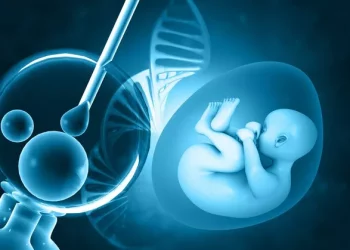Female infertility is a topic that has seen substantial discussion over the years. Despite this dialogue, there still exists a significant gap in understanding the complexity underlying it. This article seeks to delve into the various causes of female infertility and ways in which these can be addressed.
Female Infertility: A Complex Issue
Infertility in women is a multifaceted problem, influenced by a myriad of factors, ranging from physiological conditions to lifestyle habits. Understanding this complexity is the first step towards addressing the issue.
Defining Female Infertility
Female infertility refers to a woman’s inability to conceive after a year of regular unprotected intercourse. It also includes instances where conception happens but is unable to proceed to a live birth.
Delving into the Causes of Female Infertility
Female infertility can result from issues within different parts of the female reproductive system. These can broadly be classified into ovulation disorders, structural abnormalities, and ‘unexplained infertility.’
Dissecting Ovulation Disorders
Ovulation disorders, affecting approximately 25% of all infertile couples, encompass conditions that prevent or disrupt ovulation. These include Polycystic Ovary Syndrome (PCOS), Hypothalamic Dysfunction, Premature Ovarian Failure, and excessive Prolactin.
Understanding Structural Abnormalities
Structural abnormalities refer to physical impediments in the female reproductive system that prevent conception or a successful pregnancy. These can include uterine or cervical abnormalities, fallopian tube damage or blockage, and endometriosis.
Decoding ‘Unexplained Infertility’
Sometimes, infertility remains unexplained despite normal functioning of the reproductive system. This idiopathic category highlights the complexity of fertility and signifies the potential role of subtler factors influencing fertility.
Lifestyle Implications on Female Infertility
Lifestyle factors like age, weight, exercise patterns, diet, smoking, alcohol, and stress can deeply impact fertility. A proper understanding of these factors can often help in managing infertility.
Diagnosis and Treatment: Tackling Female Infertility
Female infertility is investigated using methods like ovulation testing, hysterosalpingography, laparoscopy, hormone testing, and genetic testing. Treatment approaches include medicine, intrauterine insemination, surgery, and assisted reproductive technology depending on the cause.
Impact of Infertility on Emotional Well-being
The journey of infertility can be emotionally taxing. Psychological support and counseling can play a crucial role in navigating the emotional labyrinth surrounding infertility.
Conclusion: Demystifying Female Infertility
Understanding the complex problem of female infertility offers a window into critical dimensions of women’s reproductive health. This understanding is the bedrock for developing effective strategies to address infertility and opening up possibilities for millions of couples desiring to conceive.
Crucially, it’s vital to remember that female infertility is not merely a woman’s issue – it deeply affects couples, families, and societies at large. It intertwines with significant socio-cultural structures, depicting a connection with aspects like gender roles, societal expectations, and personal identities. Awareness and understanding of female infertility could lead to more supportive social landscapes where infertility is discussed openly and managed empathetically.
Female infertility is a complex issue impacted by many factors. Unravelling this complexity enables more meaningful conversations around it and empowers women in their journey towards conception.
While treatment options are continually evolving, the importance of lifestyle factors and emotional well-being cannot be underestimated in managing female infertility.
And, with each step towards understanding its intricacies, with every dialogue fostering openness and empathy, and with ongoing scientific advancements, the journey towards managing it effectively grows increasingly hopeful.

























